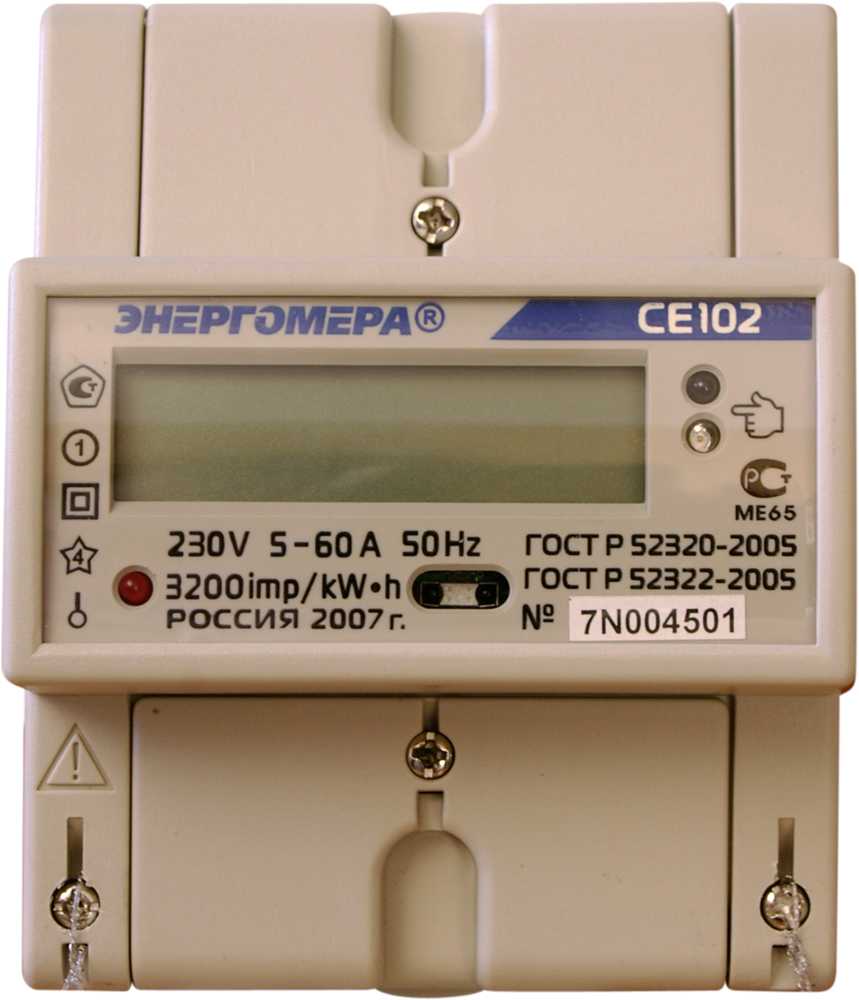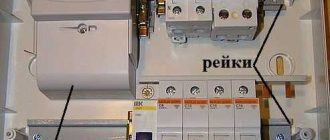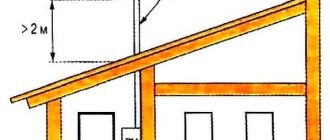오늘날에는 전기 요금을 절약할 수 있는 이중 요금제 전기 계량기를 설치하는 사람에 대해 자주 들을 수 있습니다. 이 기사에서 이중 요금제가 무엇이며 어떻게 작동하는지 알아보세요.
시간대에 따라 소비되는 전력량은 매우 다릅니다. 피크 시간대는 오후 5시에서 오후 11시 사이입니다. 이때 사람들은 퇴근 후 집에 돌아와 가전제품을 활발하게 사용하기 시작합니다. 두 번째 피크는 오전 7시부터 10시까지의 아침 피크입니다. 이 시간은 모든 사람이 깨어 있고 일하고 공부하는 시간입니다. 낮에는 소비량이 (오전에 비해) 약간 감소하지만 상당히 높은 수준을 유지합니다. 밤 시간대인 23시부터 오전 7시까지는 전기가 가장 적게 소비됩니다.
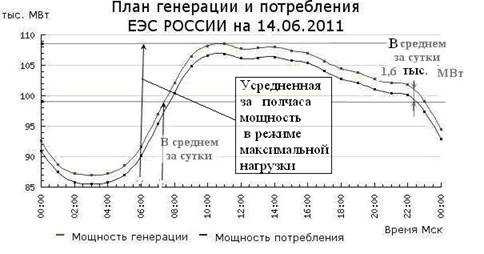
특히 저녁에 높은 부하가 관찰되며 이는 주간 수준보다 몇 배 더 높습니다. 이러한 피크 부하는 전력 시스템에 대한 테스트입니다. 일부 활동을 가장 부하가 적은 시간대인 야간 시간으로 전환하기 위해 "피크"와 야간 시간대, 또는 "낮"과 "밤"이라는 두 가지 요금이 도입되었습니다. 때로는 비용 차이가 상당하여 최대 50% 이상을 절약 할 수 있습니다. 이것은 나쁘지는 않지만 소비량을 별도로 측정하려면 두 가지 관세 전기 계량기가 필요합니다.
외부 적으로 이러한 미터는 실질적으로 다르지 않습니다. 변화하는 것은 그들의 "채우기"입니다. 내부에는 지정된 시간 간격으로 소비되는 에너지의 양을 별도로 계산하는 작은 프로세서가 있습니다.
기사 내용
수익성
두 가지 관세 전기 계량기의 수익성있는 설치 여부를 모호하지 않게 말하는 것은 불가능합니다. 러시아의 각 지역의 관세는 별도로 설정됩니다. 일부 지역에서는 야간 관세와 단일 관세의 차이가 3-4 배가 될 수 있습니다. 그러나 대부분의 경우 야간 요금은 주간 요금에 비해 약 절반 정도 적습니다. 그리고 그러한 조건에서도 월 요금의 1/3 이상을 상당히 많이 절약 할 수 있습니다. 그러나이를 위해 전기 제품의 작업을 야간으로 이전해야합니다. 러시아의 일부 지역에 대한 관세가 표에 나와 있습니다. 그것에 따르면 관세의 차이를 추정 할 수 있습니다.
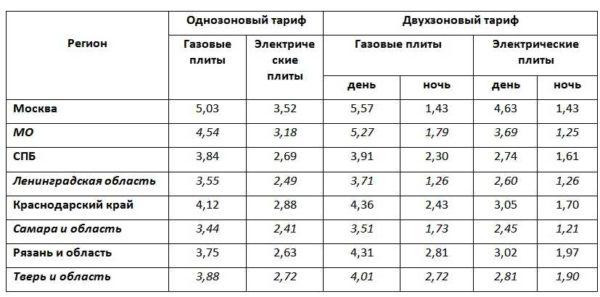
표를 분석해 보니 모든 것이 장밋빛으로만 보이는 것은 아니라는 것을 알게 됩니다. 주간 요금이 단일 요금보다 훨씬 높은 일부 지역에서는 절감 효과가 의문시됩니다. 야간 혜택은 낮 동안의 초과 지불로 인해 소모됩니다. 이러한 지역에서는 모든 것을 신중하게 계산할 필요가 있습니다(아래 참조). 계산할 때 자신의 돈으로 새로운 두 가지 관세 전기 계량기를 구입하고 필요한 경우 다시 프로그래밍 할 것이라는 점을 고려해야합니다. 따라서 얼마 동안은 투자 한 자금을 갚을 것입니다. 그리고 관세 나 법률의 변경에 영향을받지 않는 사람은 없습니다. 그리고 몇 년 안에 단일 관세 미터기보다 2 개 관세 미터기에 더 많은 비용을 지불하는 것으로 판명 될 수 있습니다. 이미 그러한 사례가 많이 있습니다.
비용을 절약할 수 있는 항목
최신 가전제품에는 지연 시작 기능이 있을 수 있습니다. 덕분에 밤에 빨래를 하고, 식기 세척기에서 설거지를 하고, 아침 식사(멀티 쿠커, 제빵기 및 기타 유사한 가전 제품)를 요리할 수 있습니다. 어떤 사람들은 타이머를 설정하여 밤에 저장 보일러에 물을 데워 아침이 가까워지면 난방을 하기도 합니다. 게다가 냉장고, 에어컨 또는 난방 기기와 같은 많은 "일반" 가전제품이 밤에 작동합니다. 따라서 낮보다 밤의 소비량이 더 많을 수 있습니다.
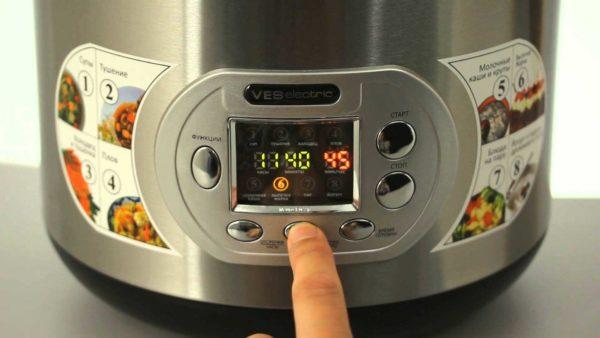
해당 지역의 요금이 "정상"이고 절감 효과가 있는 경우 소비량이 많은 대가족의 경우 이중 요금 전기 계량기를 설치하는 것이 좋습니다. 이러한 시스템은 자정이 훨씬 지나서 잠자리에 드는 '올빼미족'에게 유용합니다. 그들의 주요 활동은 밤에 이루어 지므로 주요 소비는 가장 낮은 요금이 될 것입니다. 그러나이 혁신이 실질적인 이점을 제공하는지 여부를 정확하게 결정하려면 계산을 거쳐야 만 할 수 있습니다.
비용 효율성 결정
먼저 해당 지역에서 시행중인 2 구역 및 단일 구역 관세를 찾아야합니다. 그런 다음 며칠 동안 (더 나은 - 일주일) 실험을 수행하기 위해 가능한 모든 기술 프로세스를 밤에 전송하고 야간 관세에서 소비하는 전기의 양과 주간 관세를 추적합니다. 판독 값은 오전 7시와 오후 11시에 수동으로 기록해야합니다. 소수점 이하까지 기록해야 계산이 더 정확해집니다.
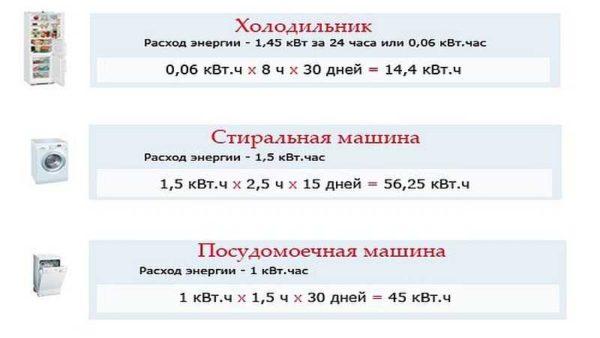
일주일 동안 수집된 수치는 주간과 야간에 각각 별도로 합산됩니다. 여기에 해당 관세를 곱합니다. 두 구역 요금제로 전환할 때 지불할 금액을 알 수 있습니다. 비교할 수 있도록 총 소비 전력량(야간 및 주간 부분을 합산)을 계산하고 여기에 단일 구역 요금을 곱하면 됩니다. 이제 그 차이를 계산하고 그만한 가치가 있는지 평가할 수 있습니다.
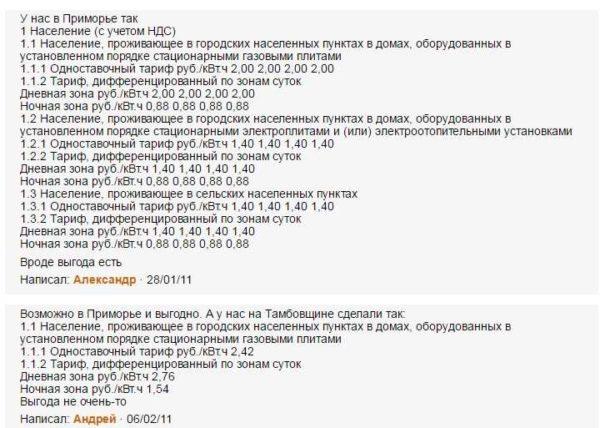
제조업체 및 가격
모든 유형의 전기 계량기는 단상 및 3상입니다. 2상 및 다중 관세도 있습니다. 외관뿐만 아니라 이것에서도 차이가 없습니다. 차이점은 일반적으로 가격에 있지만 이해할 수 있습니다. 더 복잡한 장비는 더 높은 비용이 듭니다.
시장에서 가장 많이 요구되는 것은 모스크바 전기 측정 장치 공장 (MZEPa)의 두 가지 관세 전기 계량기입니다. 요점은 품질 (그런데 평균)이 아니라 가격면에서 이러한 유형의 계량 장치 중 가장 저렴합니다. 이 회사는 두 가지 관세 에너지 미터 SOE-55를 생산합니다. 그들은 8 가지 수정으로 사용할 수 있습니다. 설계된 최대 전류의 값, 프로그래밍 할 수있는 영역의 수가 다릅니다. 모든 모델에는 딘 레일 또는 특수 상자에 설치하기위한 두 가지 유형의 하우징이있을 수 있습니다. 2 상 전기 계량기 SOE-55의 가격 - 20$에서 30$까지, 그리고 이것은 소매 네트워크에서.
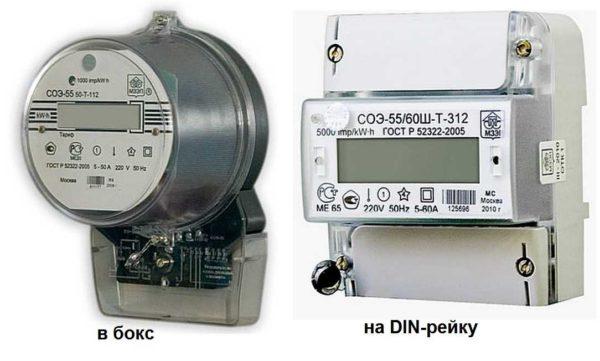
에너고메라 미터는 102 마킹을 4가지 변형으로, 208 마킹을 2가지 변형으로 사용할 수 있습니다. 각 수정은 상자에 장착하기위한 표준 케이스와 DIN 레일 용 돌출부가있는 여러 가지 경우에 수행 할 수 있습니다. 원격 판독 표시기가 있는 하우징도 있습니다.
나쁜 단위가 아닌 리뷰에 따르면,이 브랜드의 강력한 터미널의 다른 제품은 항상 좋은 연결을위한 강력한 터미널입니다. 또한 보증 기간이 있습니다 - 출시일로부터 5 년. 가격 - 간단한 모델은 약 23$, 리모컨 - 130$의 비용이 소요됩니다.
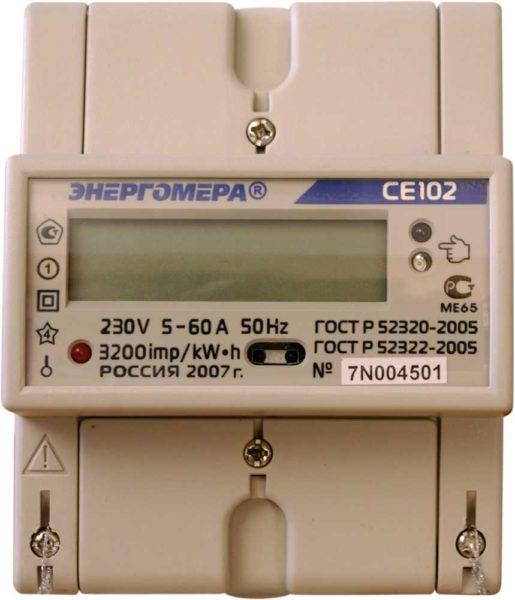
모스크바 회사 "INCOTEX"의 꽤 인기있는 제품 - 수은 미터. 이 브랜드의 다상 미터에는 세 가지 수정이 있습니다: 수은 200, 203 2T, 206. 그들은 4 가지 관세를 계산할 수 있으며 하루에 최대 8 개의 구역을 프로그래밍하고 8 가지 유형의 요일을 설정할 수 있습니다 (때로는 주말과 공휴일도 우대 요금으로 계산 됨). 최대 12개의 시즌을 설정할 수 있습니다. 비용은 25$에서 70$까지입니다("트릭"의 정도에 따라 다름).
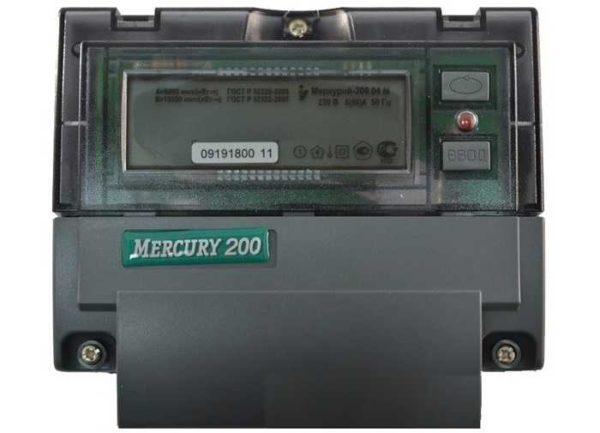
단일 관세 계량기와 동일한 방식으로 두 가지 관세 전기 계량기를 연결하십시오. 그것에 대해 생각할 필요가 없으며 모든 것이 설명되어 있습니다. 여기.
이중 요금 미터에서 검침하는 방법
대부분의 이중 요금 미터기에는 특정 빈도(보통 10초에 한 번)로 일부 숫자가 변경되는 LCD 화면이 있습니다. 이 숫자가 나타내는 것은 여권에 적혀 있으며, 여권은 반드시 키트에 있어야 합니다. 하지만 보통은 있습니다:
- 날짜.
- 현재 시간입니다.
- 소비된 총 전기량. 이 매개변수가 화면에 나타나면 그림 T 또는 비문 합계가 표시됩니다. 이 매개 변수는 주야간 충전에는 필요하지 않습니다. 오히려 참조 문자입니다.
- 일일 요금의 전기량입니다. T 1 또는 T 1,1로 표시됩니다. 이 매개변수를 기록해야 합니다.
- 야간 요금의 전기량은 T 2 또는 T 1.2입니다. 이 매개변수도 필요합니다.
이러한 매개변수는 항상 표시됩니다. 현재 전압과 주파수도 표시될 수 있습니다. 이는 참조 데이터이므로 네트워크의 매개변수를 제어할 수 있습니다.
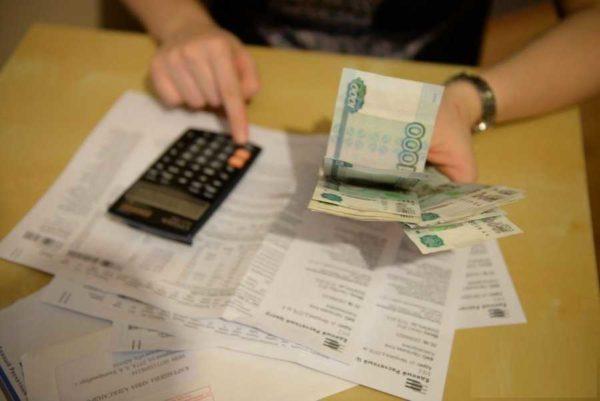
이중 요금 계량기에서 전기 요금을 결정할 때는 전월의 계량기에서 2자리, 방금 전의 계량기에서 2자리 등 총 4자리 숫자를 빼야 합니다. T1에서 T1, T2에서 T2와 같이 쌍으로 빼면 됩니다. 결과 차이는 각 구역에서 소비된 킬로와트 수입니다. 이 금액에 해당 관세를 곱하고 합계를 더한 후 소비된 전기의 총 비용을 얻습니다.
더 명확하게 설명하기 위해 예를 들어보겠습니다. 가스 스토브가 있는 집인 상트 페테르부르크에 계량기가 설치되어 있습니다. 전월의 판독값입니다:
- T1 - 325.2kW
- T2 - 278.8kW
방금 측정한 수치입니다:
- T1 - 417.7kW
- T2 - 332.6kW
차이를 결정합니다:
- T1 = 417.7 - 325.2 = 92.5kW
- T2 = 332,6 - 278,8 = 53,8 kW
합계 계산하기:
- 일일 관세 T1: 92.5kW * 3.91 루블/kW = 361.675 루블
- 야간 관세 T2: 53.8kW * 2.30 루블/kW = 123.74 루블
총 금액: 361,68 + 123,74 = 485,42 문지름.
동시에이 경우 이중 요금 계량기의 사용이 수익성이 있는지 여부를 추정 할 수 있습니다. T1과 T2를 추가하여 소비 된 총 전기량을 구하고 얻은 수치에 단일 구역 관세를 곱해 보겠습니다:
소비된 총 전력량은 92.5 + 53.8 = 146.3kW이며, 총 금액은 146.3 * 3.84 = 561.792 루블입니다.
이러한 결과에 따르면 상트 페테르부르크에 2 관세 미터를 설치하는 것이 상당히 수익성이 있다고 결론을 내릴 수 있습니다. 이 작은 소비로 절약은 76.32 루블입니다.

